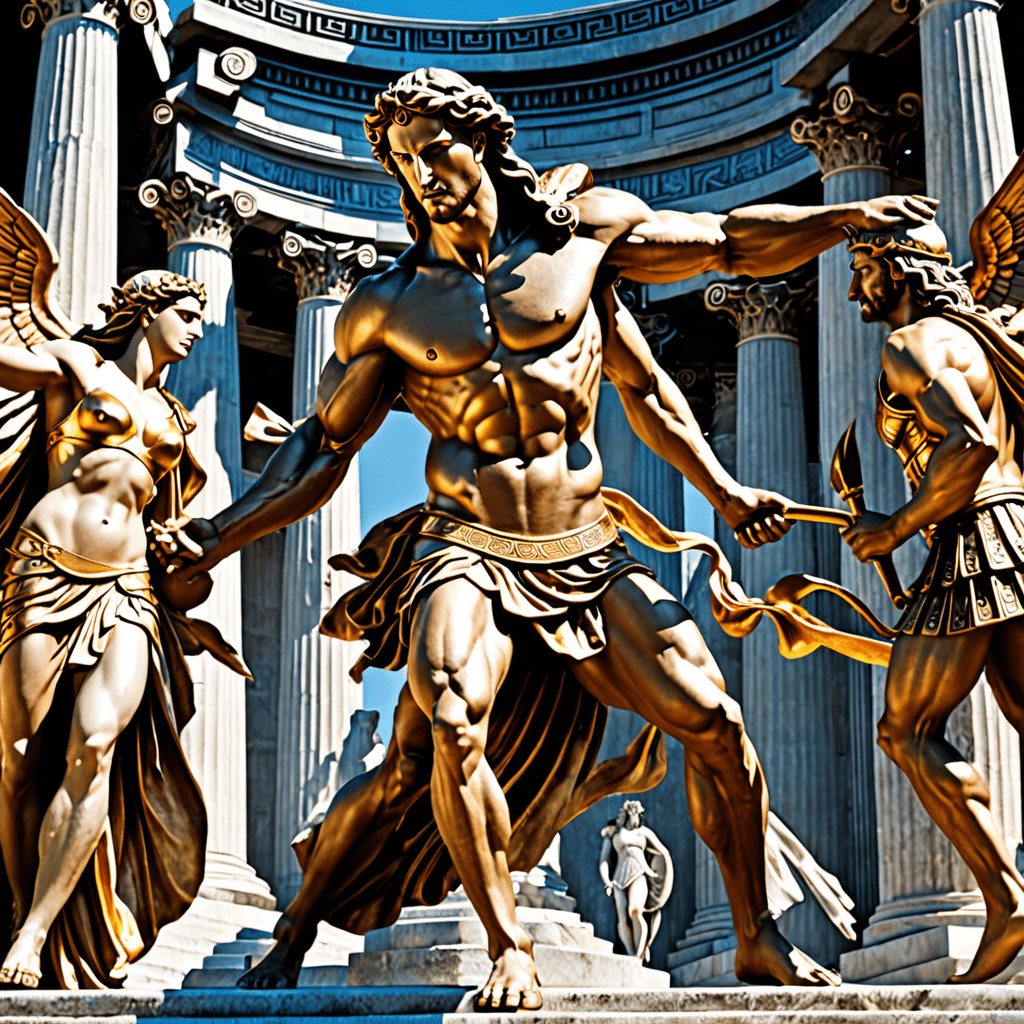I. Introduction
Across cultures and throughout history, water has been revered not just as a vital resource but as a sacred element imbued with deep spiritual significance. Sacred waters, encompassing lakes, rivers, and other bodies of water, hold a unique place in the mythologies and folklore of diverse societies. These waters often symbolize life, death, and rebirth and serve as powerful metaphors for the connections between humanity and the divine.
This article aims to explore notable sacred bodies of water around the world, delving into their cultural significance, mythological tales, and contemporary relevance. By examining these mythical waters, we can gain insight into how various cultures perceive nature and spirituality.
II. The Role of Water in Mythology
Water is a fundamental symbol in many cultures, representing various concepts that transcend the physical realm. Its fluidity, adaptability, and life-giving properties make it a potent metaphor in mythology.
- Symbolism of water: Water often symbolizes purity, renewal, and transformation. It is seen as a source of life and sustenance, reflecting the cyclical nature of existence.
- Connection to life, death, and rebirth: Many myths depict water as a boundary between life and death, where souls are transported or transformed. This connection emphasizes the transient nature of human existence.
- Water as a boundary between worlds: In various mythologies, rivers and lakes act as thresholds separating the mortal realm from the divine. These sacred waters are believed to facilitate communication between humans and gods.
III. Sacred Lakes in Lore
A. Lake Baikal: The Jewel of Siberia
Lake Baikal, situated in Siberia, is the deepest and oldest freshwater lake in the world. It is often regarded as a sacred site by the indigenous Buryat people, who attribute its origins to spiritual beliefs.
- Myths surrounding its origins: One legend states that Baikal was created from the tears of a beautiful young woman, representing love and loss.
- Cultural significance among indigenous peoples: The lake is seen as a living entity, with rituals performed to honor its spirit and ensure the health of the surrounding ecosystem.
B. Lake Titicaca: The Birthplace of the Sun
Lake Titicaca, straddling the border between Bolivia and Peru, is the highest navigable lake in the world. In Inca mythology, it is believed to be the birthplace of the sun and the first Incas, Manco Capac and Mama Ocllo.
- Inca mythology and creation stories: The lake is central to Inca cosmology, symbolizing fertility and sustenance.
- Ritual practices associated with the lake: Annual festivals and rituals are conducted to honor the lake, reflecting its importance in agricultural cycles and community identity.
C. The Isle of Avalon: The Enchanted Lake of Arthurian Legend
The Isle of Avalon is a mystical place from Arthurian legend, often associated with a magical lake where King Arthur was taken after his final battle.
- Connections to the myth of King Arthur: Avalon is depicted as a place of healing, where Arthur rests until the time of Britain’s greatest need.
- The lake as a symbol of healing and magic: The waters of Avalon are said to possess healing properties, representing hope and the possibility of rebirth.
IV. Mythical Rivers and Their Legends
A. The River Styx: Gateway to the Underworld
In Greek mythology, the River Styx serves as the boundary between the living world and the underworld. Souls must cross this river to enter the realm of the dead.
- Greek mythology and the afterlife: The Styx is often depicted as a dark and treacherous river, underscoring the fears and mysteries surrounding death.
- The role of Charon and the journey of souls: Charon, the ferryman, transports souls across the Styx, emphasizing the importance of proper burial rites to ensure safe passage.
B. The Ganges: Sacred Waters of Hinduism
The Ganges River, known as Ganga in Hinduism, is considered one of the holiest rivers, personified as the goddess Ganga.
- Mythological origins and goddess Ganga: According to legend, Ganga descended from the heavens to cleanse the sins of humanity.
- The river’s role in purification and spiritual practices: Pilgrimages to the Ganges for ritual bathing are common, as the waters are believed to purify the soul and grant moksha.
C. The Nile: Life-Giving Waters of Ancient Egypt
The Nile River was crucial to the survival of ancient Egyptian civilization, often revered as a god.
- Myths surrounding the Nile in Egyptian cosmology: The river was believed to be a gift from the gods, representing fertility and abundance.
- Rituals and festivals celebrating the river: Various festivals, such as the flooding of the Nile, were celebrated to honor its life-giving properties and ensure agricultural prosperity.
V. The Intersection of Nature and Spirituality
Sacred waters are often intertwined with natural landscapes, leading to a profound connection between nature and spirituality.
- Natural features as sacred sites: Mountains, forests, and lakes are often regarded as sacred spaces, where nature itself is seen as divine.
- The impact of sacred waters on local ecosystems and biodiversity: Many communities hold sacred waters in reverence, leading to conservation efforts that protect local flora and fauna.
- Community practices and conservation of sacred waters: Rituals and traditions surrounding sacred waters often promote sustainability and environmental stewardship.
VI. Contemporary Relevance of Sacred Waters
In the modern world, the significance of sacred waters continues to resonate, reflecting ancient beliefs while addressing contemporary issues.
- Modern interpretations of ancient myths: Many people today seek meaning in ancient stories, using them to navigate modern spiritual landscapes.
- The resurgence of interest in indigenous water rights and sacred sites: Movements advocating for the protection of sacred waters highlight the need for respect and recognition of indigenous cultures.
- Environmental challenges facing sacred lakes and rivers today: Pollution, climate change, and industrialization threaten these sacred sites, prompting calls for action and conservation efforts.
VII. Case Studies: Sacred Waters Around the World
A. The Amazon River and its Sacred Significance
The Amazon River, often referred to as the “lungs of the Earth,” holds spiritual significance for many indigenous communities that inhabit its banks.
- Indigenous beliefs and traditions: The river is viewed as a living entity, and rituals are performed to honor its spirit and ensure its health.
- Challenges faced by the Amazon: Deforestation and pollution are threatening the delicate ecosystems and the cultural practices tied to the river.
VIII. Conclusion
The exploration of sacred lakes and rivers reveals the profound relationship between humanity and the natural world. These bodies of water are not mere physical entities but are deeply woven into the fabric of cultural identity, spirituality, and ecological sustainability. By understanding and respecting these sacred waters, we not only honor the traditions of the past but also work toward a harmonious future that acknowledges the intrinsic value of nature.



